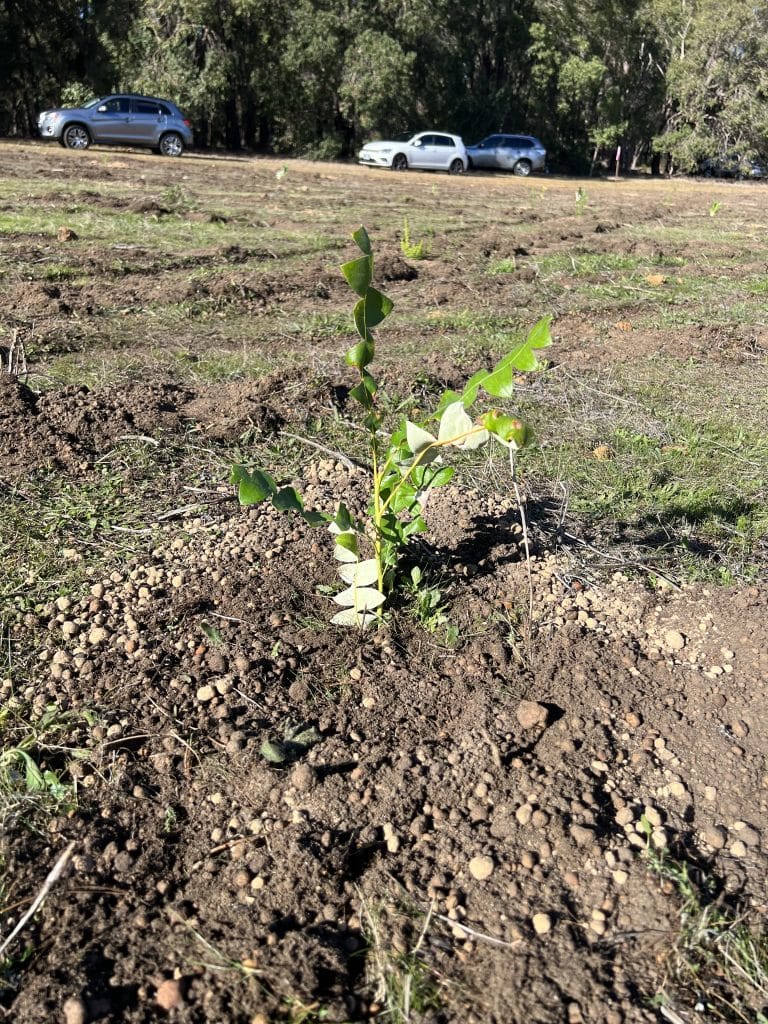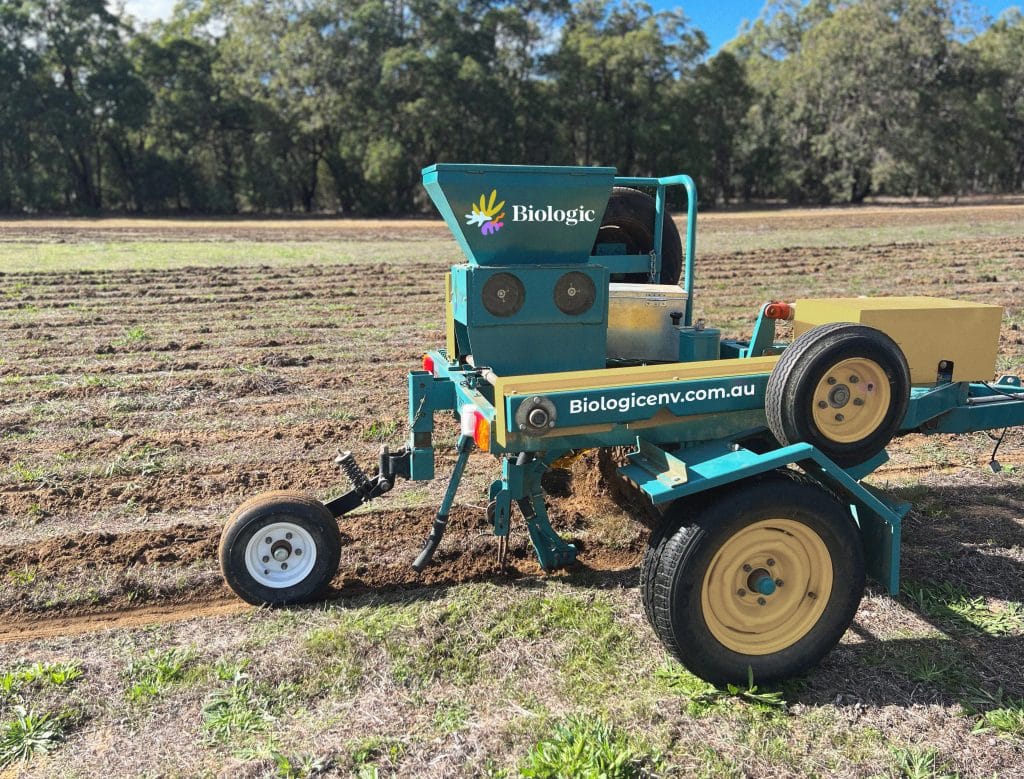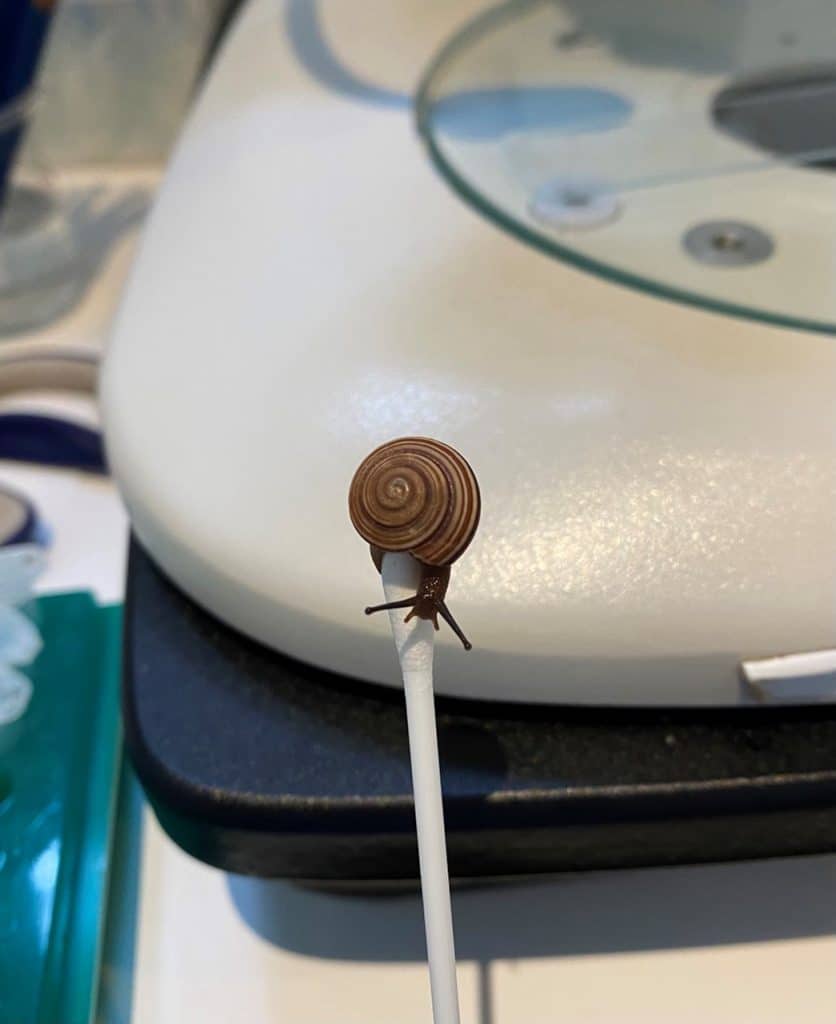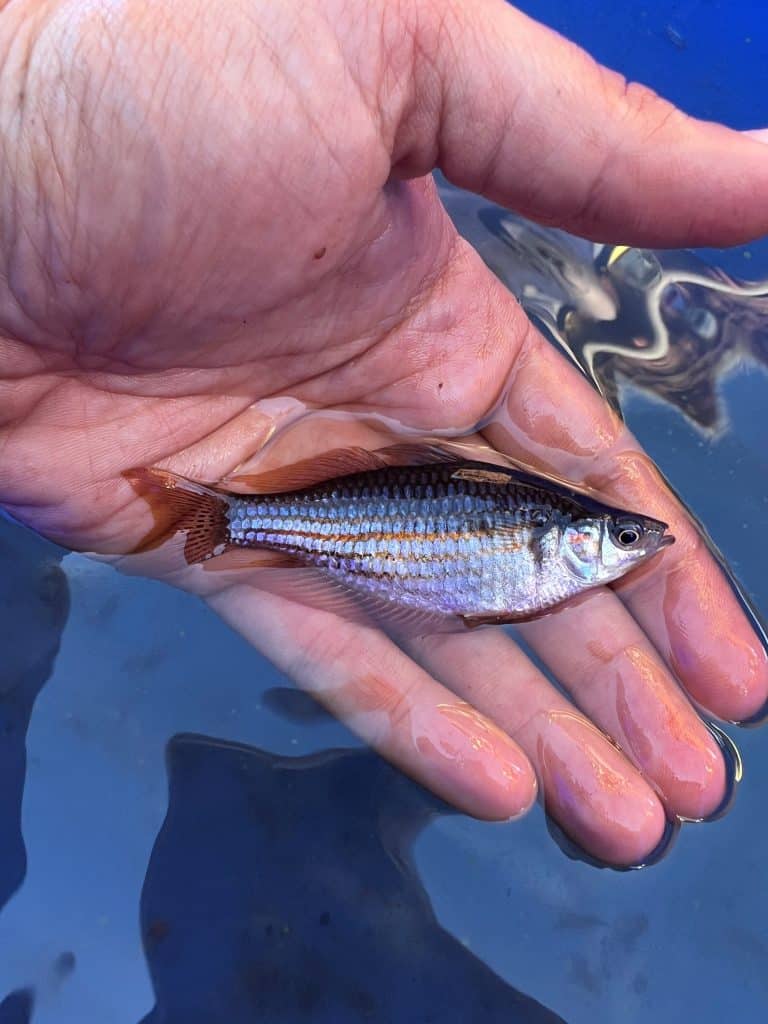Liesel Morgan Land snails often exhibit high levels of endemism and are vulnerable to habitat degradation. As such, they are…
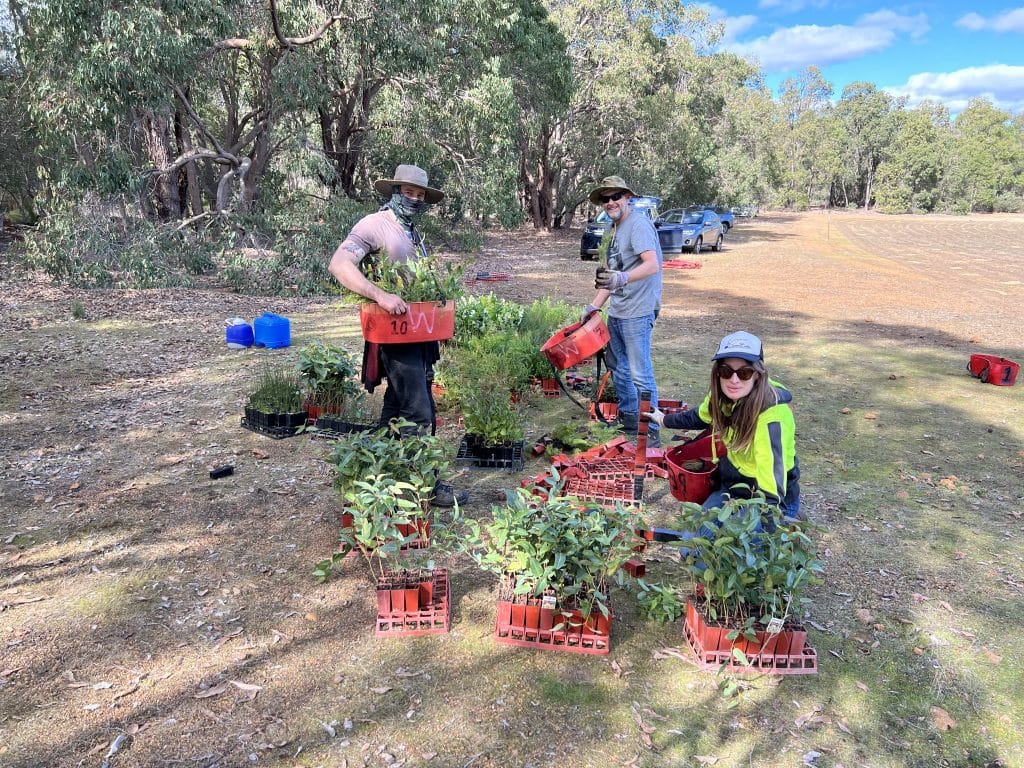
On a sunny Saturday ahead of one of the wettest starts to winter on record, a team of workmates, family and friends came together to help complete the second stage of restoration works at Biologic’s Gidgegannup Biodiverse Carbon Project (GBCP).
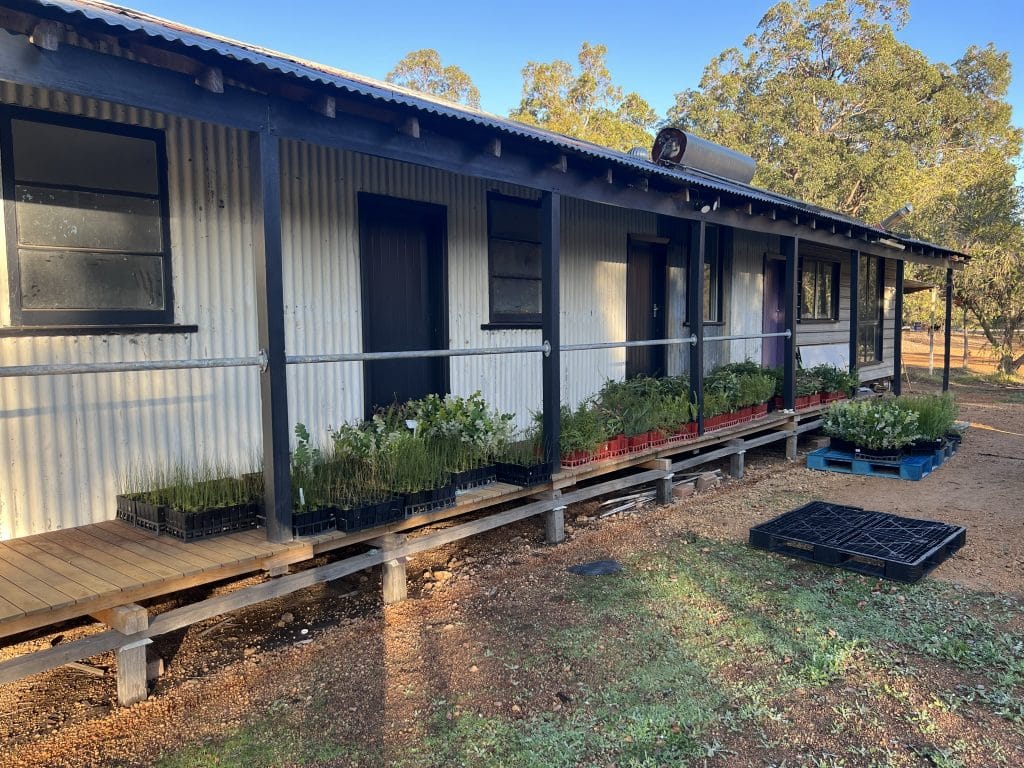
Over the day, 30 volunteers planted 42 species of seedling into the cleared paddocks that form the carbon estimation area of the GBCP. The diversity of species planted reflects our commitment towards our dual goals for the project: to advance best-practice techniques of restoring diverse and resilient ecosystems while generating high-quality carbon credits under the federal government’s Emissions Reductions Fund.

Biologic’s restoration project officer Heidi Nistelberger kicked off the day with a short demonstration of how to plant the seedlings to ensure their greatest chance of survival. The volunteers then took up tools and bright red buckets of seedlings and got to work. Small teams spread out across the site, planting a mix of species at densities designed to mimic the structure and pattern of vegetation in the remnant patches of jarrah and marri forest that cover two- thirds of the block. Sheoak (Allocasuarina fraseriana), balga (Xanthorrhoea preissii) and zamia (Macrozamia riedlei) were planted in clusters to reflect their natural tendency to grow in groups in the surrounding landscape.
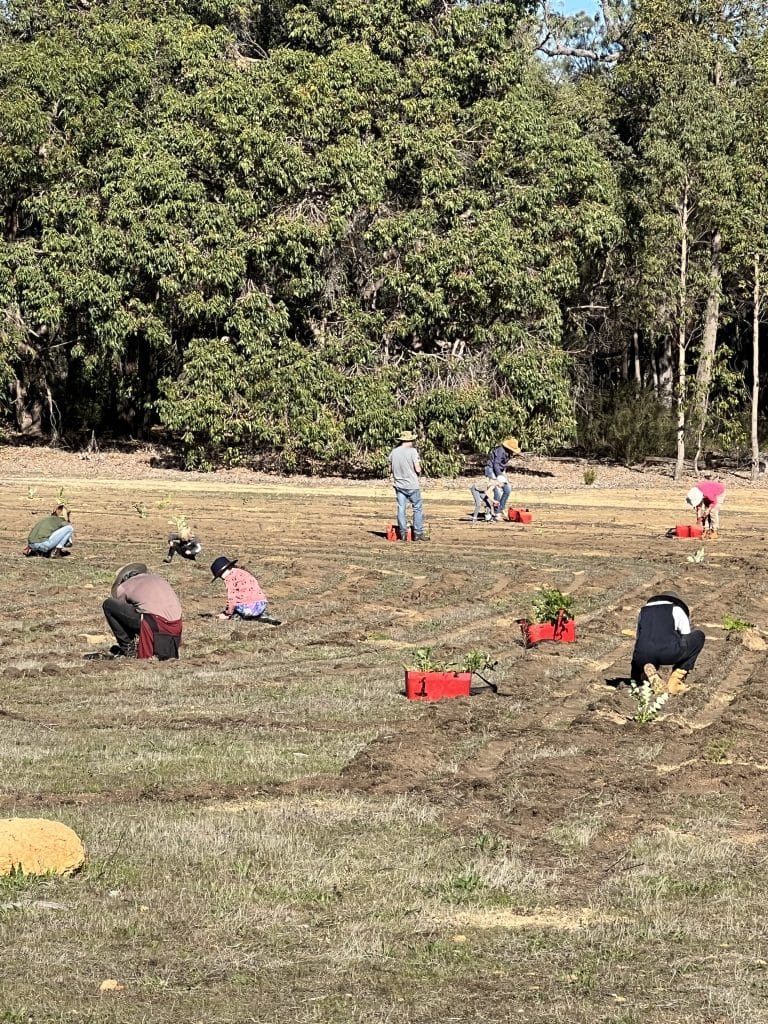
The community planting day followed two days of direct seeding using Biologic’s new Burford Tree Seeder. The Burford seeder can be towed behind a standard 4WD, making it suitable for use on smaller sites or in situations where using a larger seeder towed behind a tractor is not practicable. Using lighter equipment also reduces the risk of sub-soil compaction, especially in the loamy and clayey-sand textured soils of the wheatbelt.
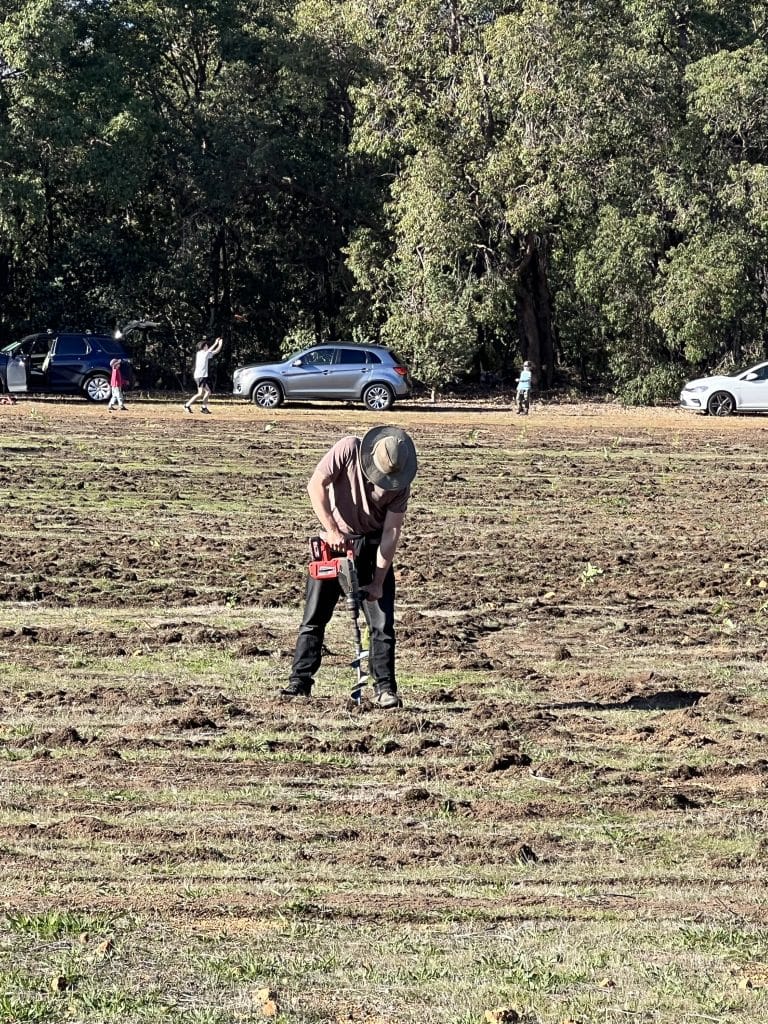
After a day of drilling, digging, planting, filling in and smoothing over – and the equivalent of a month’s worth of gym membership in repetitive squatting – chairs were circled, the BBQ cooked and tired muscles relaxed around the warmth of the fire pit.
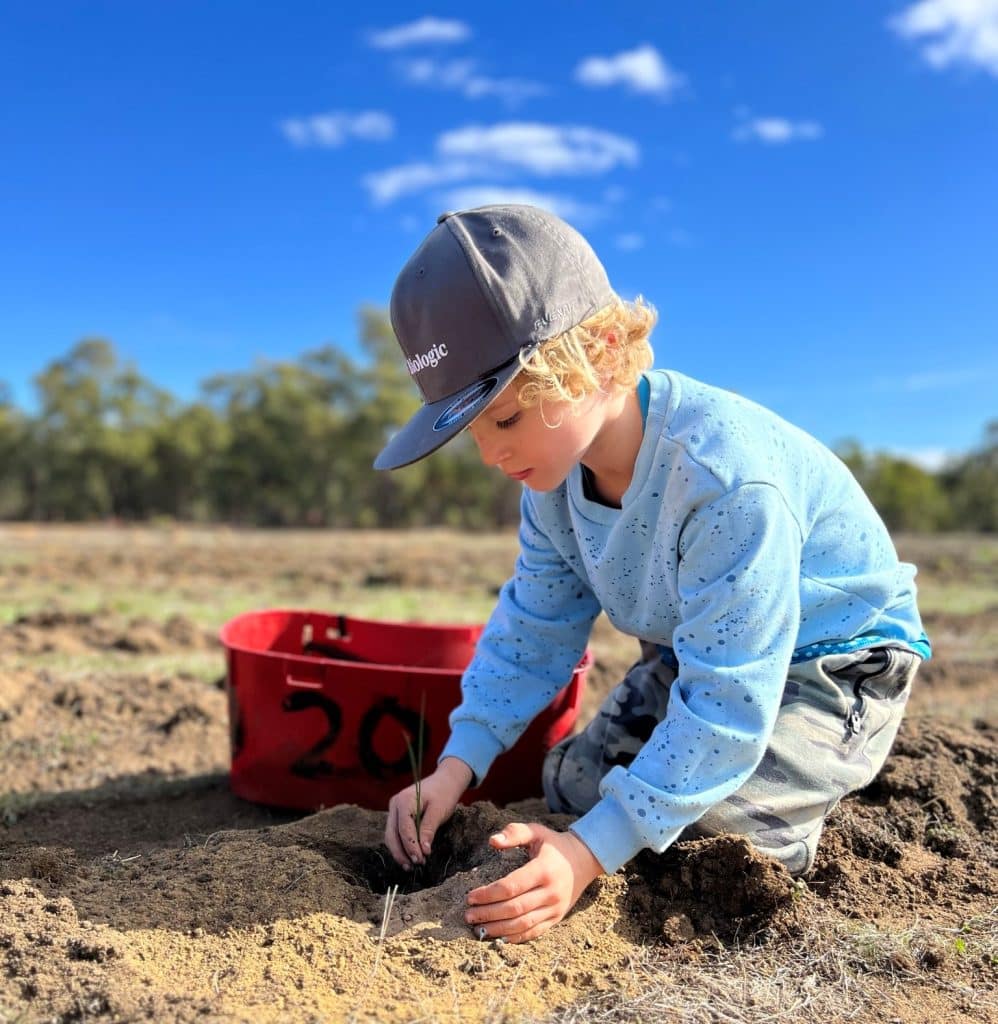
Then, over the following three days, 90 mm of rain fell at Gidgegannup – a deep watering for the newly planted seedlings and the kind of follow-up to a planting day that restoration practitioners dream of.
